Cork House is also Stirling Prize contender
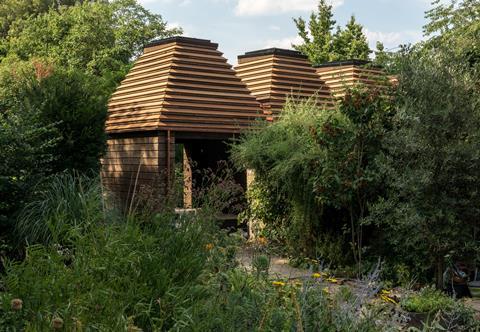
Six architects have been shortlisted for the 2019 Stephen Lawrence Prize.
They include Matthew Barnett Howland, working with Dido Milne and Oliver Wilton, for the Cork House beside Eton College which is also a contender for this year’s Stirling Prize contender.
The winners of both awards will be announced on the same night, October 8, at the Roundhouse in Camden, north London.
The other architects vying for the Stephen Lawrence Prize are Dualchas, David Sheppard Architects, HASA, Tikari Woods and Jonathan Pile. See below for full details.
The prize is awarded to the best project of the year with a construction budget of less than £1m.
Stephen Lawrence Prize founder Marco Goldschmied said: “Now in its twenty-second year, the Stephen Lawrence Prize and bursary, sponsored by the Marco Goldschmied Foundation, rewards the best projects with a construction budget of less than £1 million and aims to encourage ingenuity and diversity amongst aspiring and practicing architects.
“The judges were inspired by the skill, creativity and innovation of the architects and clients behind each of the shortlisted projects from across the whole of the UK. They range from a clever re-use of a derelict glasshouse in to a community garden and event space, to a series of unique homes responding to challenging urban and rural sites, often achieving the most with the least.”
Stephen Lawrence Prize 2019 shortlist
:: Black House, Isle of Skye, by Dualchas Architects
A black timbered house located within a rocky depression with spectacular views across the water
The decision of the architects to locate this black timbered house within a dipping rocky depression close to the water’s edge has enabled it to engage less directly with the nearby road, have a reduced profile in the landscape and develop a stronger connection with the sea. The fully glazed end wall of the main living space frames a spectacular view across the water to rugged hills on the other side of the inlet, while reflected light provides an everchanging pattern across the white interior.
There is a persuasive integrity to the rigorous use of pure rectangular forms, the strictly limited palette of colour and materials, and the consistent purity of minimalist detailing throughout, which enriched by the inclusion of the art and artefacts of the owners, have succeeded in creating a calm, inviting and exceptional home.
:: Cork House, Berkshire, by Matthew Barnett Howland with Dido Milne and Oliver Wilton
44sq m
An ingenious, experimental, carbon-neutral private house made almost entirely from cork
Designed with immense attention to detail, Cork House is a structure of great ingenuity. Sited within the area of a grade II-listed mill house dating back to the early nineteenth century, the Cork House beautifully reflects and respects the natural surroundings in form and construction. The ‘whole-life approach’ to sustainability truly sets this project apart. Designed, tested and developed in partnership with The Bartlett School of Architecture UCL, the collaborative team have delivered a project that is the first of its kind.
An entirely cork construction, with solid structural cork walls and roof, the building emits next to zero carbon. The biogenic construction of prefabricated cork blocks and engineered timber is carbon negative at completion and has remarkably low whole life carbon. All the components can be reused or recycled, and the expanded cork blocks have been made using by-product and waste from cork forestry and the cork stopper industry. Internally, the biophilic elements such as the exposed cork and oak flooring captures the light and creates a wonderfully tranquil sensory experience. In summer the skylights open to bring a sense of lightness to the space and in winter the snug interiors emanate a sense of warmth and protection. As sustainability becomes integral to all construction, this development pushes us further to look beyond the requirements and aspire to really integrate ourselves with nature.
The inventiveness lies within the structure’s ease of assembly. The whole house is ‘designed for disassembly’ and can be constructed by hand. An incredible feat by the architects to achieve such a delicately intriguing home that sits humbly amongst its surroundings, is sustainably sound and can be easily assembled. As the first of its type, it is truly exciting to think what this project could inspire within the architectural world. The collaborative team, which includes not only The Bartlett School of Architecture UCL but also The University of Bath, Amorim UK, Ty-Mawr the BRE and consultants Arup and BRE, have really done something special with this project. The detailing is very clever, and the structure draws upon ancient inspiration, harking back to a time when humans and nature were more intertwined.
Form, function and footprint are all equally considered and respected. This is a truly well thought through, carefully researched project that has created a home that inspires those that are lucky enough to visit. A noble, momentous model to aspire to.
:: The-Green-House, Tiverton, by David Sheppard Architects
232sq m
An original tall tower house standing among trees and moulded into its surrounding environment
This is a crafted building created by an intuitive mind. It appears on the landscape as an organism that has moulded itself to its environment. It rests upon the topography to dramatic effect. This is a wholly original house.
The first sight of the building is of a triangular wedge placed on a very steep slope, on approach the dramatic green roof sweeps down seemingly to offer a welcoming hand. A discreet opening on the side of the larch clad walls allows entry into an unexpected dramatic high space within, with vistas and shapes in many directions. The space draws you in.
This main living space of the house has slid down the hill to reach for the trees, where the catkins brushes against the glass. This piano noble has wrap round full height glazing with deep window seats perched at branch level looking down onto the swimming ponds below and out across the distant fields.
The plan and roof form is freed from the rectilinear, and the flow of space up the staircase to a library window seat is delightful. The use of fine plaster and ply veneer is restrained and balanced, highlighted with spalted wood stairs and dining table from timbers from the estate. The bedrooms are arranged for privacy, with simple thoughtful joinery detailing.
The external experience of the house changes as you move around it, there being no attributable front or back. It makes an intriguing bent shape on plan, and together with its falling roof makes it impossible to pin down. It is at the same time dynamic and in repose. A restrained palette of materials, of larch boarding from the estate and glazing in dark window frames, brings out the forms to good effect. From below at lake level, it is a tall tower house standing with the trees whilst from uphill it is lower than eye level. Bat boxes are integrated on the side. This house abounds with character and personality. A masterful play of shaping with land, trees and water that might well prove to be timeless.
:: Highgate Bowl, London, by HASA Architects
320sq m
A derelict horticultural glasshouse transformed into a community garden and versatile event space
‘If we create it, they will come’ said the client with a quiet confidence of someone who, after a number of disappointments and false starts on this magical site has realised that something very special is in the offing.
The architects have made some highly effective, very low cost small-scale interventions to transform a derelict horticultural glasshouse at Highgate Bowl near the top of Highgate Hill in North London, bringing this forgotten piece of the city back into public use as a community garden and versatile event space.
These sensitive interventions take the form of new external and internal pathways, as well as rooms and furniture pieces that guide visitors through the large open bays of the restored but still fragile glass house that existed on the site. Roof glazing has been restored or replaced, some with frosted glass and the metal framing simply cleaned and repainted in dark grey.
A very effective white oiled CNC cut birch plywood internal ‘skin’ has been used to create vertical and horizontal joinery components which reference the original structure’s frame and panel construction as they step down with each bay across the inclined site, providing a buffer zone to the facade and informing a horizontal datum at chest height, except for two large new plywood sliding doors which could form a canvas for graphics.
Some are structural, others have a multiplicity of functions, some utilitarian, used to create tables and a central stage/performance area and some processional, for example ramps directing you through the space. The plywood forms a robust interface to protect the fragile structure from human use and create a visual contrast to the dark glasshouse framing. Simple vertical linear lighting is installed into recesses behind the plywood verticals which could interplay with their reflection in the glass.
The use of one material throughout creates continuity, reinforcing the connection between each bay of the glasshouse while the new plywood subtly contrasts with both the old glasshouse and the highly visible landscape.
The brief for the project has been created organically with both the client and the architect ‘feeling their way into it’. Sensitivity and lightness of touch is evident throughout much of the architectural installation – much has been achieved with relatively small means.
It is also clear that, although we have reached a delightful staging post, this project will continue to evolve and grow.
:: Pocket House, London, by Tikari Works
105sq m
A family home with warm welcoming interiors, created using a material palette of brick, timber and concrete
This project transforms an underutilised site containing garages into a family home. It successfully deals with a number of constraints, including a restriction on height and the need to maintain neighbours’ privacy. This has been achieved by locating part of the house below ground and through the efficient use of space, including significant built-in storage elements that become architectural features in themselves, adding to the unique character of the house.
A high level of quality and excellent value for money have been achieved on this project, which is no mean feat. A concise material palette of brick, timber and concrete is beautifully finished and left exposed throughout the building, creating a calming sense of refuge from the outside world. The quality of the joinery is impressive, and the architect has demonstrated a rigorous control over cost by using materials to their full potential – for example, designing out all secondary steel work for the timber stairs. The refined detailing creates an elegant appearance. It is apparent that every interface has been carefully considered by the architect.
The house is relatively modest in area, though carefully curated views, excellent circulation and sensitive use of natural light make it appear much larger. The basement level does not feel subterranean due to the sophisticated arrangement of the bedrooms around a generous lightwell. These spaces are further enhanced by minimal walls and the clever use of recessed doors that, when opened, create a large open-plan area.
The architects designed and acted as main contractor on this project, a successful approach that is hopefully replicated in their future work. This approach was a key factor in achieving excellent value for money achieved and an exceptional degree of quality, made possible through the great selection of materials and detailing. Every aspect of family life has been carefully considered and accommodated with warm and welcoming interiors.
:: Crossfield Street House, south London, by Jonathan Pile Architect
149sq m
A unique courtyard house with a clever layout, which offers a calming retreat among its city surroundings
This courtyard house offers a new typology for reusing complex and underutilised urban sites. It makes the most of the site and responds sensitively to the grade I-listed St Paul’s Church through its scale and use of black-stained timber, which references earlier timber-clad houses prevalent in Deptford in the 17th and 18th centuries. The timber sits modestly above the original brick wall that borders the site from the street.
The building’s layout capitalises on the irregularly shaped site through an ingenious arrangement of rectilinear spaces for the bedrooms and bathrooms. These are united by irregular living space arranged around a courtyard. Glazing from this space provides a point of reference as you move through the house, and maximises the stunning views beyond the brick wall to St Paul’s. The use of exposed timber, particularly in the top-lit living space, creates a warm, welcoming, unique family home.
The house establishes a successful relationship with its surrounding neighbours and maintains their privacy through the use of carefully located windows with deep reveals and oblique views; they are never directly overlooked. The architect has adeptly managed multiple party wall awards and the sewer running below the site to deliver a successful project.
Crossfield Street House has quietly made a significant contribution to the urban quality in this area. Its clever layout and use of materials offer a blueprint for transforming similarly awkward urban sites. It is a wonderful family home which offers a calming retreat from the hustle and bustle of city life.
Jury reports: RIBA









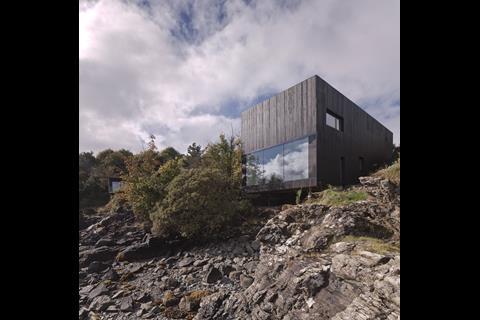
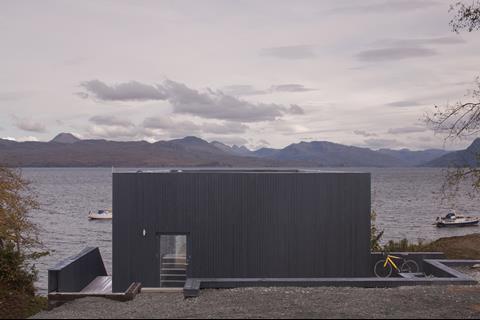
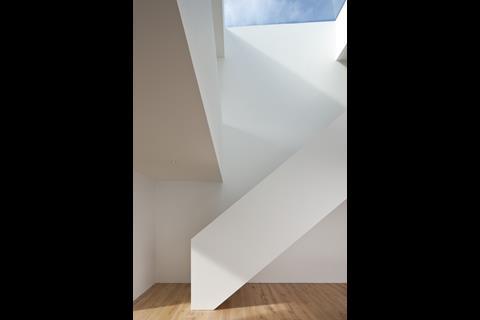
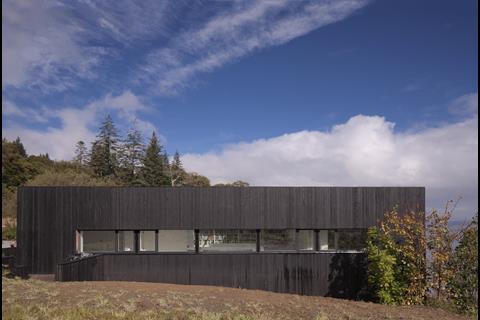
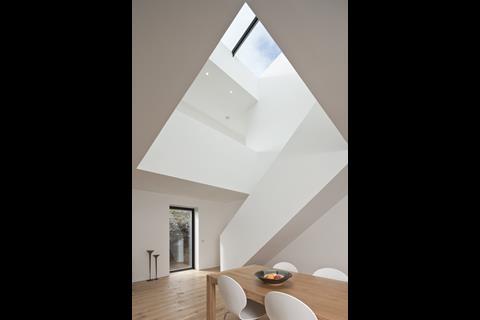
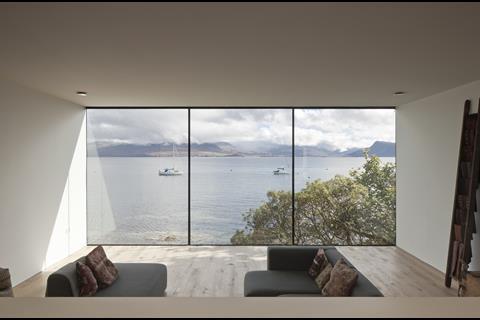
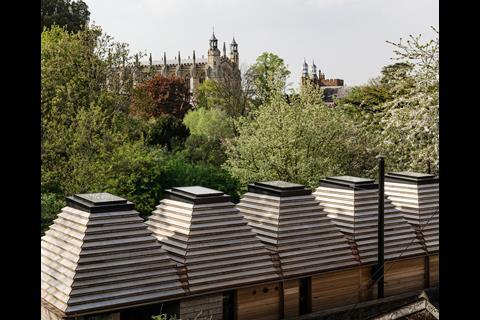
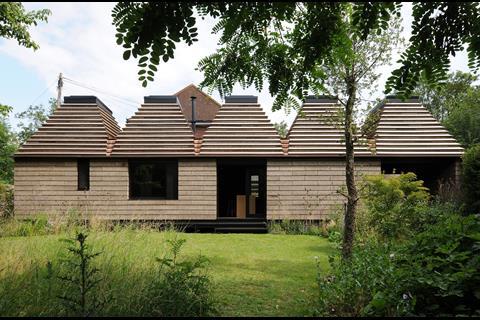
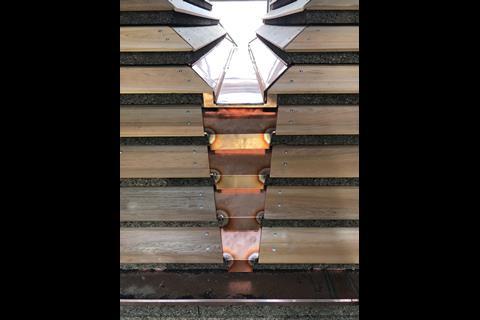


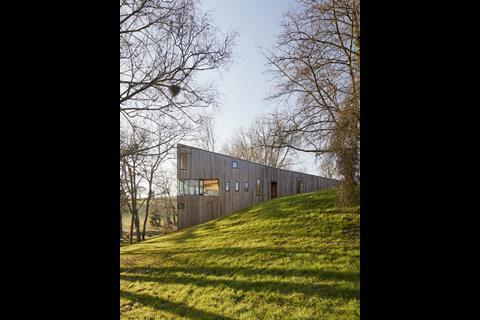


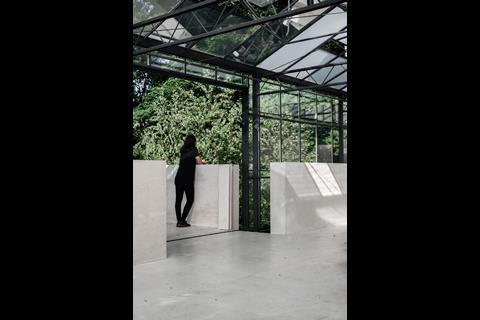
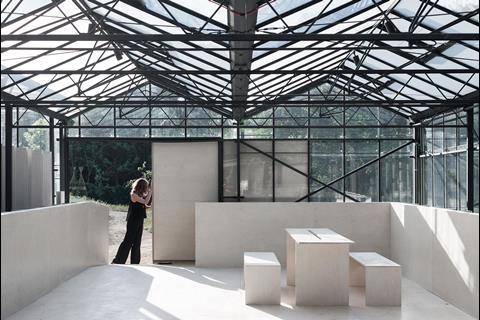
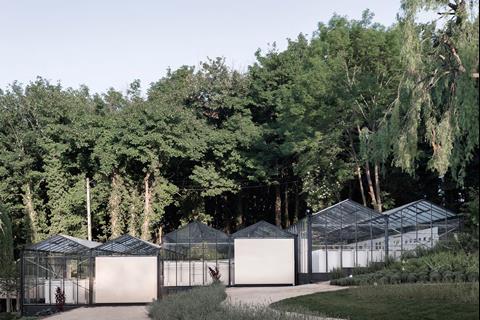
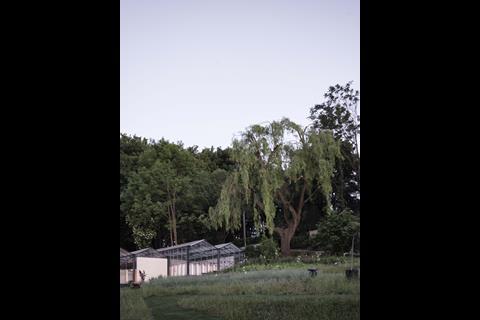
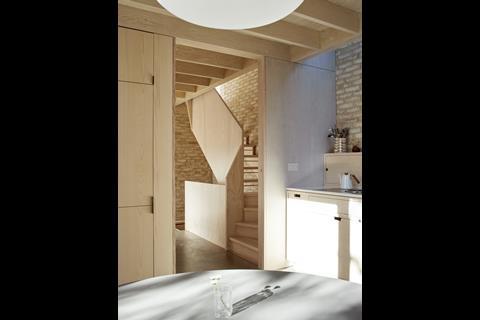

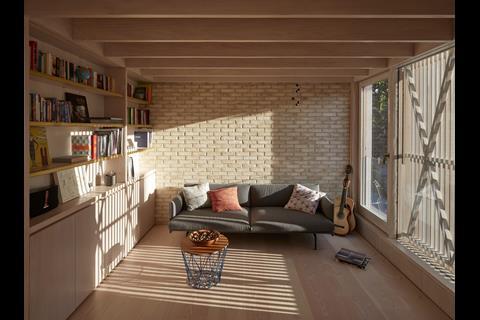
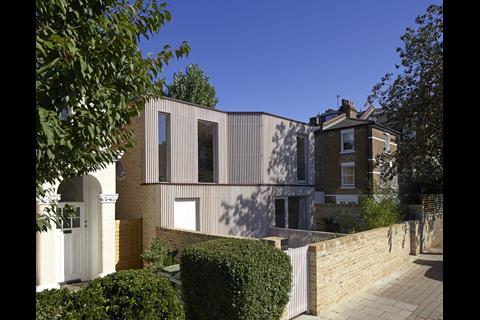
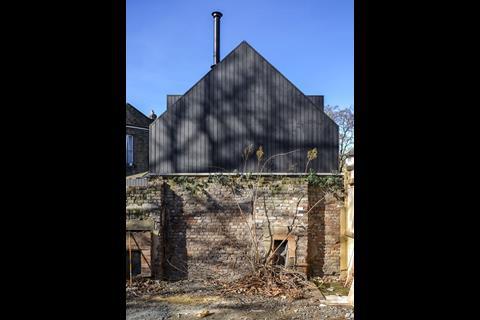
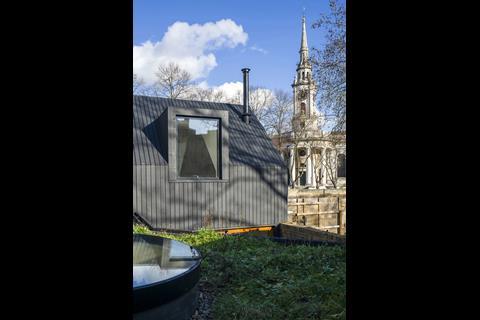
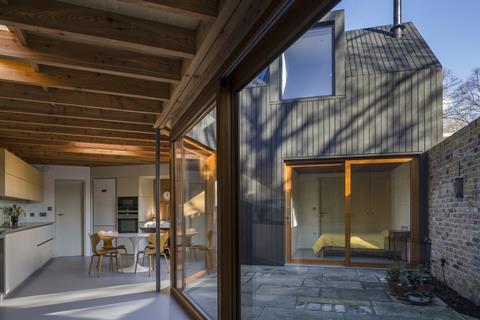
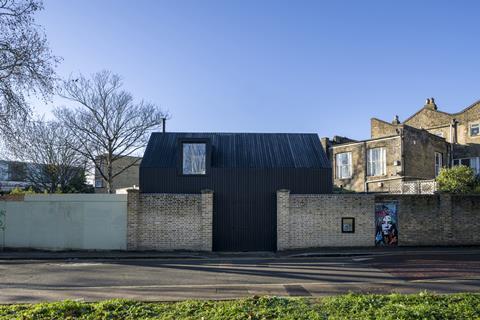
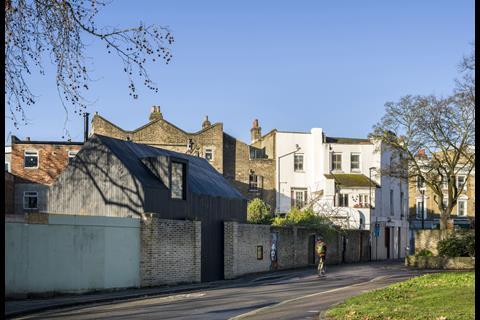







1 Readers' comment